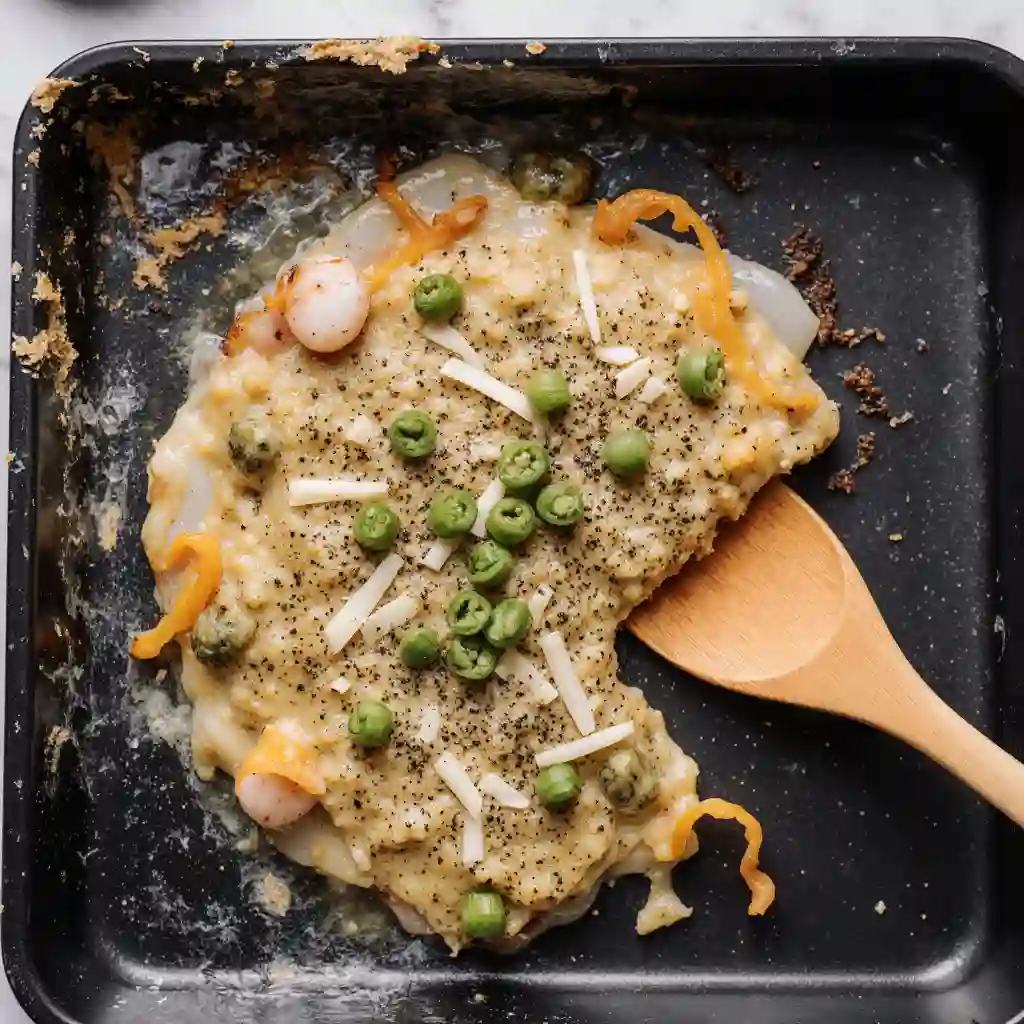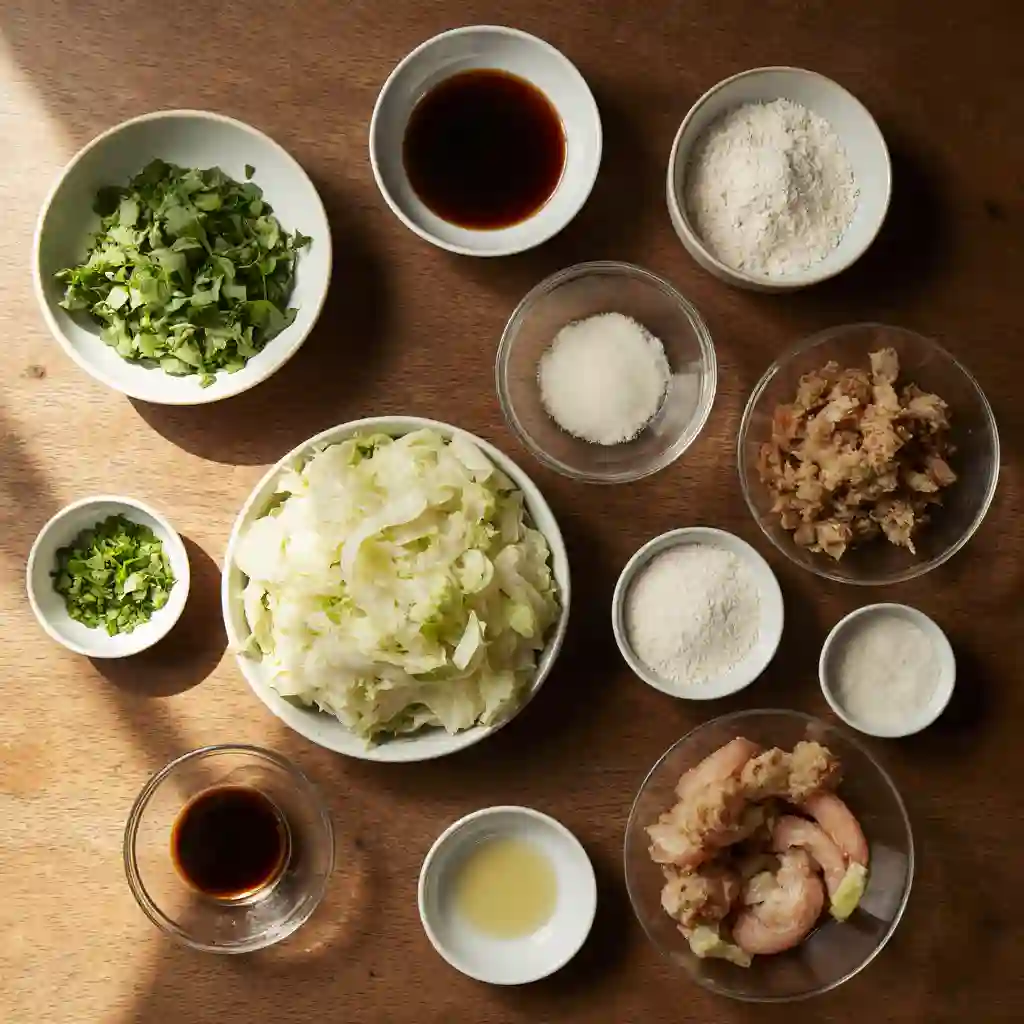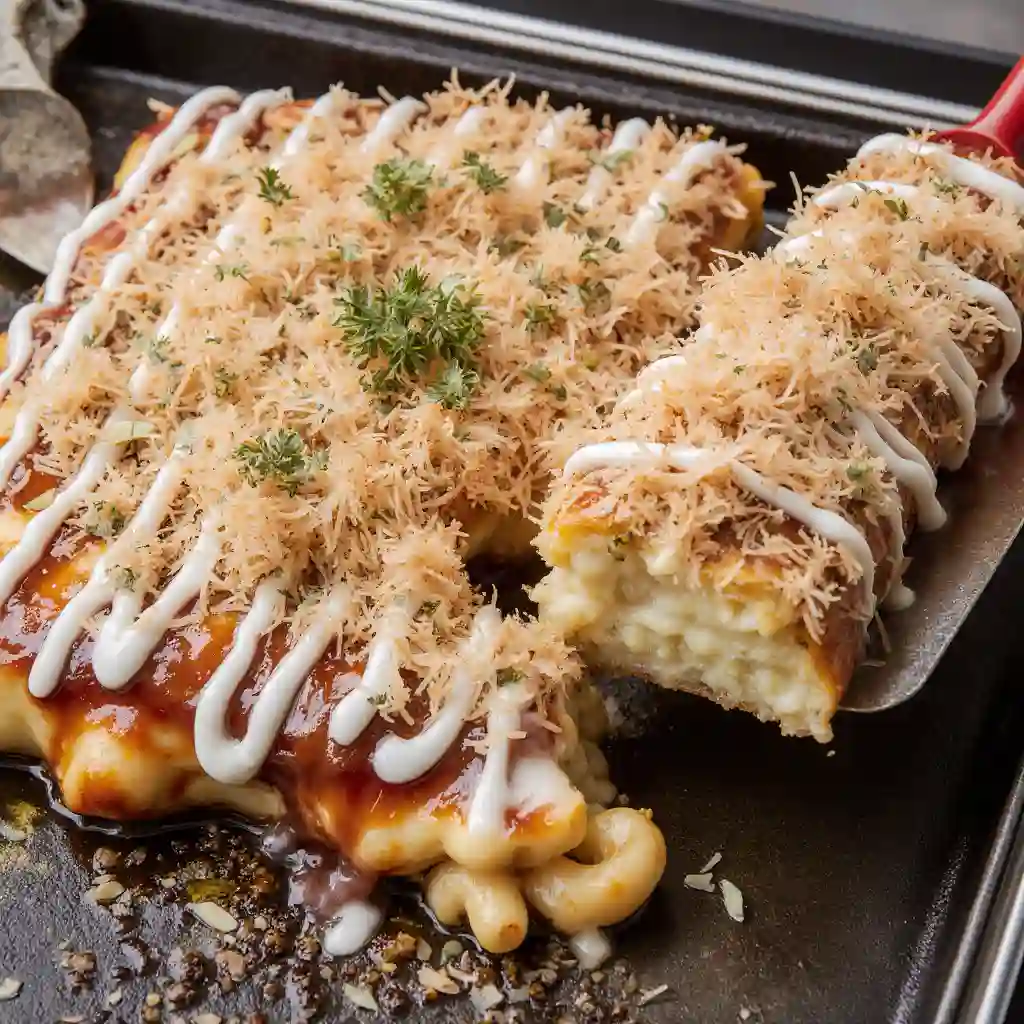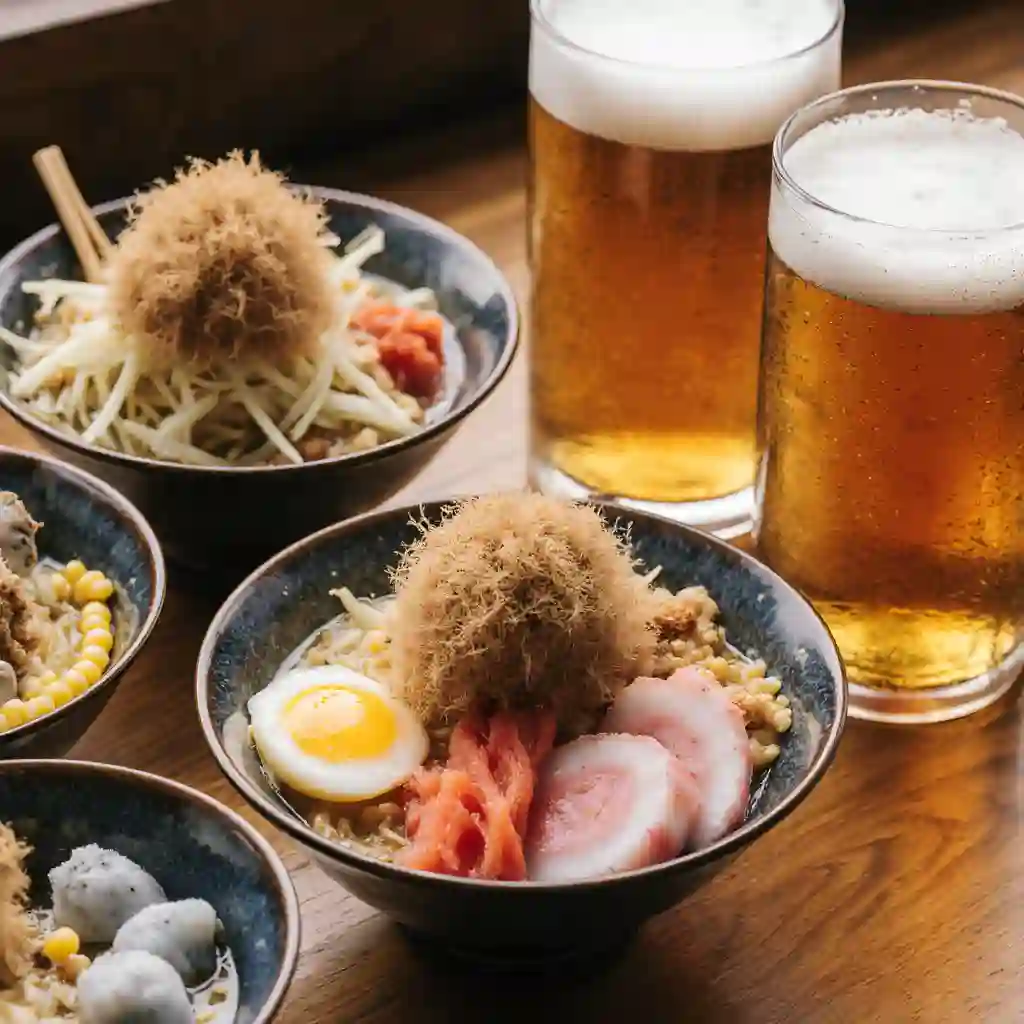Want to master Japanese cooking at home? Chef Luna’s Japanese Monjayaki Recipe is the ultimate beginner’s guide to creating authentic Tokyo street food.
As a world-class chef with years of experience in Japanese cuisine, I, Chef Luna, have simplified this Japanese Monjayaki Recipe so even first-time cooks can achieve that irresistible, gooey savory pancake texture. Join me in bringing a true taste of Japan to your kitchen easy, fun, and absolutely delicious.
Key Benefits of Japanese Monjayaki Recipe
Welcome to Chef Luna’s Japanese Monjayaki Recipe, where we dive into the key benefits of making this iconic Tokyo street food at home. If you’ve ever wanted to bring authentic Japanese cuisine to your own kitchen, you’re in the right place. Let’s break down exactly why you’ll love this dish, in a way that’s clear, practical, and approachable for any home cook.
Why Choose This Japanese Monjayaki Recipe?
This Japanese Monjayaki Recipe offers a blend of traditional flavors and modern flexibility. Here’s what makes it stand out:
- Interactive Cooking Experience
Gather friends and family around the griddle to cook and eat together, just like in Japan. It’s a social meal that sparks conversation and laughter. - Customizable Ingredients
Use classic fillings or get creative with local favorites. This savory pancake adapts to your tastes and dietary needs effortlessly. - Rich, Umami Flavor
Thanks to dashi broth, fresh cabbage, and optional seafood or meats, every bite is packed with deep, satisfying taste. - Beginner-Friendly Method
Chef Luna has refined the instructions to ensure even first-timers can achieve perfect, gooey texture without stress. - True Japanese Street Food at Home
No plane ticket required. Bring the authentic flavors of Tokyo street food straight to your dining table.
Practical Benefits at a Glance
| Benefit | Why It Matters |
| Interactive Cooking | Makes meals social and fun |
| Customizable Fillings | Adapts to any dietary preference |
| Deep Umami Flavor | Authentic taste with Japanese cuisine roots |
| Easy for Beginners | Clear steps guided by Chef Luna’s expertise |
| Versatile Occasions | Perfect for family dinners, parties, or casual nights |
Table of Contents
Chef Luna’s Insight
“As a chef with years of experience teaching Japanese Monjayaki Recipes worldwide, I know that success lies in simplicity. Don’t overthink it just use fresh ingredients, follow the steps, and enjoy the process. Cooking is meant to bring people together, and Monjayaki is the perfect dish for that.”
Actionable Tips for Home Cooks
- Prep All Ingredients in Advance
Having everything chopped and ready ensures a smooth cooking flow. - Use a Good Non-Stick Griddle or Pan
Prevent sticking and achieve that signature gooey texture. - Taste as You Go
Adjust seasonings to your preference. Don’t be afraid to experiment. - Embrace the Mess
Monjayaki is meant to be rustic and fun. Don’t worry about perfect shapes.
Closing Thoughts for This Section
By understanding the key benefits of this Japanese Monjayaki Recipe, you’re setting yourself up for success in the kitchen. It’s more than a meal it’s an experience designed to be shared, savored, and remembered.
What Are the Ingredients in Monjayaki? (Japanese Monjayaki Recipe Essentials)
Now that you understand the key benefits of this delicious Japanese Monjayaki Recipe, it’s time to explore the essential ingredients that make this dish truly special. Whether you’re cooking for the first time or looking to perfect your technique, having the right components on hand is the first step toward an authentic and flavorful experience.
Core Ingredients for Authentic Japanese Monjayaki Recipe

Best Japanese Monjayaki Recipe: 5 Perfect Tasty Twists
Ingredients
Equipment
Method
- In a large mixing bowl, combine all-purpose flour, cold dashi broth, and water. Whisk gently until you have a smooth, runny batter consistency. This is essential for authentic Monjayaki texture.
- Stir in finely chopped cabbage, green onions, seafood or meats, tenkasu, and mochi if using. Mix well to evenly distribute the fillings.
- Preheat your non-stick griddle or skillet over medium heat. Lightly grease it to prevent sticking and achieve the signature gooey finish.
- Pour a ladleful of batter onto the griddle. Use a spatula to spread it into a thin, uneven circle approximately 6–8 inches wide. Let it cook slowly, stirring gently as it firms up to create the classic sticky, stretchy consistency.
- Drizzle soy sauce over the cooking Monjayaki for added umami flavor. Once cooked and slightly crispy on the edges, serve hot with pickled ginger or dipping sauces if desired.
Notes
This recipe balances traditional flavors with accessible ingredients, making it easy to find everything at your local grocery store or Asian market.
| Ingredient | Role in the Recipe | Notes |
| All-purpose flour | Forms the base of the batter | Use fresh for best results |
| Dashi broth | Adds rich umami flavor | Substitute with instant dashi powder or homemade stock |
| Cabbage (finely chopped) | Provides texture and sweetness | Fresh, crisp cabbage preferred |
| Water | Adjusts batter consistency | Use cold for better control |
| Tenkasu (tempura bits) | Adds crunch and authenticity | Optional but recommended |
| Soy sauce | For seasoning and depth | Low-sodium preferred |
| Mochi (optional) | Adds chewiness and extra texture | Cut into small cubes |
| Seafood or meats (optional) | Common fillings like shrimp, squid, or pork | Use fresh and thinly sliced |
| Green onions (scallions) | Adds freshness and mild sharpness | Finely chopped |
| Pickled ginger (beni shoga) | Adds a tangy contrast | Optional but traditional |
Chef Luna’s Ingredient Tips
- Freshness is key. The quality of your cabbage and seafood directly impacts the final flavor and texture.
- Don’t skip the dashi broth; it’s the heart of the umami punch in this Japanese Monjayaki Recipe.
- Feel free to customize the fillings based on your preference Monjayaki is all about versatility.
Ingredient Preparation: Step-by-Step

Before you start cooking, here’s how to prep your ingredients efficiently:
- Chop the cabbage finely to ensure it cooks evenly and blends well with the batter.
- Prepare your dashi broth ahead of time or use instant powder dissolved in cold water.
- Slice any seafood or meats thinly for quick cooking on the griddle.
- Measure out the flour and water precisely to get the perfect batter consistency.
- Set out any optional ingredients like mochi or tenkasu so they’re ready to add as you cook.
Visual Guide: Ingredient Components
| Category | Ingredients |
| Batter Base | All-purpose flour, dashi broth, water |
| Vegetables | Cabbage, green onions, pickled ginger |
| Add-ins | Tenkasu, mochi, seafood, meats |
| Seasonings | Soy sauce |
Transition to Cooking
With your ingredients prepped and ready, you’re halfway to mastering this Japanese Monjayaki Recipe. Next, we’ll walk through the step-by-step instructions that bring all these flavors together on the griddle.
This section gives you a solid foundation in the components you need, setting you up for success as you move into cooking. Remember, Chef Luna recommends taking your time with preparation it’s the secret to an authentic and delicious result.
Step-by-Step Japanese Monjayaki Recipe Instructions
Now that you have your ingredients ready, it’s time to bring your Japanese Monjayaki Recipe to life. I’ll guide you through the process with clear, easy-to-follow steps designed to help you create an authentic, mouthwatering dish right in your own kitchen.
Getting Started: Essential Equipment
Before you begin, make sure you have the right tools on hand to make cooking smooth and enjoyable:
| Equipment | Purpose |
| Non-stick griddle or large skillet | Perfect for cooking the batter evenly and preventing sticking |
| Spatula or wooden scraper | For mixing and flipping the Monjayaki batter |
| Mixing bowl | To combine ingredients |
| Measuring cups/spoons | For accurate ingredient portions |
Step-by-Step Instructions
- Prepare the Batter:
In a large mixing bowl, combine all-purpose flour with cold dashi broth and water. Whisk gently until the mixture forms a smooth, slightly runny batter. This consistency is key for that classic gooey texture. - Add Vegetables and Fillings:
Stir in the finely chopped cabbage, green onions, and your choice of seafood or meats. If using tenkasu or mochi, add them now for extra crunch and chewiness. - Heat the Griddle:
Preheat your non-stick griddle or skillet over medium heat. Lightly grease the surface with oil or butter to prevent sticking. - Pour and Spread:
Pour a ladleful of the batter mixture onto the griddle. Using the spatula, gently spread it into a thin, uneven circle about 6-8 inches wide. The batter should be thin enough to cook through quickly but still maintain some thickness. - Cook Slowly:
Allow the batter to cook slowly. As it bubbles and firms up, use the spatula to mix and push the batter together, creating the signature stretchy, gooey texture unique to Monjayaki. - Season to Taste:
Drizzle a small amount of soy sauce over the cooking Monjayaki to enhance the flavor, adding a savory umami boost. - Serve Hot:
Once cooked through and slightly crispy on the edges, transfer the Monjayaki to plates. Serve immediately with optional pickled ginger or a side of dipping sauce.
Cooking Tips from Chef Luna
- Patience is key: Cooking Monjayaki slowly over medium heat ensures the flavors meld beautifully without burning.
- Mix while cooking: Don’t hesitate to stir the batter on the griddle occasionally to develop its unique gooey texture.
- Adjust consistency: If the batter feels too thick, add a splash of water; if too runny, add a bit more flour.
- Keep it warm: Use a low heat setting to keep cooked Monjayaki warm without drying it out when serving multiple portions.
Visual Overview of Cooking Process
| Step | Action | Tips |
| 1. Prepare Batter | Whisk flour and dashi broth | Aim for smooth, runny batter |
| 2. Add Fillings | Mix cabbage, meats, toppings | Evenly distribute ingredients |
| 3. Heat Griddle | Medium heat, lightly greased | Prevents sticking |
| 4. Spread Batter | Thin, uneven circle | Creates signature texture |
| 5. Cook Slowly | Stir gently, watch bubbles | Achieve gooey consistency |
| 6. Season & Serve | Add soy sauce, plate hot | Enjoy immediately |
Bringing It All Together
Following these steps will help you master the texture and flavor that make this Japanese Monjayaki Recipe so beloved. As Chef Luna always says, “Cooking Monjayaki is as much about enjoying the process as it is the delicious result. Take your time, experiment, and savor every bite.”
Japanese Monjayaki Recipe – Pro Tips and Variations

Now that you’ve mastered the basics of this delicious Japanese Monjayaki Recipe, it’s time to take your skills to the next level with some expert tips and exciting variations. Whether you want to perfect your technique or experiment with new flavors, these insights from Chef Luna will help you customize and elevate your dish.
Pro Tips for the Perfect Japanese Monjayaki Recipe
- Choose the Right Cabbage:
Use fresh, crisp cabbage for a satisfying crunch and sweetness. Avoid watery or old cabbage as it can make the batter too soggy. - Master the Batter Consistency:
The key to authentic Monjayaki lies in the batter’s texture. Aim for a thin, runny batter not too thick to achieve that signature gooey, stretchy consistency. - Use Quality Dashi Broth:
For the richest umami flavor, opt for homemade dashi or a trusted instant dashi powder. This simple ingredient transforms the entire dish. - Cook on Medium Heat:
Patience pays off. Cooking slowly allows the flavors to meld and prevents burning. Stir gently to develop the classic Monjayaki texture. - Don’t Overload with Fillings:
While it’s tempting to pack in ingredients, balance is key. Too many fillings can weigh down the batter and affect cooking.
Exciting Variations to Try
To keep your Monjayaki adventure fresh, here are some creative twists that Chef Luna recommends:
| Variation | Description | Tips |
| Seafood Delight | Add shrimp, squid, and scallops for ocean flavors | Use fresh, finely chopped seafood |
| Vegetarian Twist | Include mushrooms, corn, and bell peppers | Skip meat, boost umami with soy sauce |
| Cheese Monjayaki | Sprinkle shredded cheese on top as it cooks | Use melting cheeses like mozzarella |
| Spicy Kick | Add sliced chili peppers or a dash of chili oil | Balance heat with sweetness |
| Kimchi Fusion | Mix in chopped kimchi for tangy, spicy flavor | Adjust soy sauce to reduce saltiness |
Chef Luna’s Expert Insight
“Experimenting with different ingredients is part of what makes the Japanese Monjayaki Recipe so enjoyable,” says Chef Luna. “I encourage home cooks to start simple, then gradually try variations to discover their personal favorites. The dish is very forgiving and welcomes creativity.”
Quick Reference: Pro Tips & Variations
| Pro Tips | Variations |
| Fresh cabbage for crunch | Seafood Delight |
| Thin, runny batter consistency | Vegetarian Twist |
| Quality dashi for umami | Cheese Monjayaki |
| Medium heat cooking | Spicy Kick |
| Balanced fillings | Kimchi Fusion |
Enhancing Your Cooking Experience
By applying these pro tips and exploring variations, you not only improve your cooking technique but also personalize this traditional recipe to your taste. This approach makes your Monjayaki journey more exciting and satisfying.
Japanese Monjayaki Recipe Serving Suggestions
After cooking your delicious Japanese Monjayaki Recipe, presenting and enjoying it well is just as important as the preparation. In this section, I’ll share simple but effective serving ideas to enhance your dining experience and impress your guests.
Serving Ideas for Japanese Monjayaki Recipe
- Serve Straight from the Griddle:
Monjayaki is best enjoyed hot and fresh. Consider serving it directly from the cooking surface, allowing guests to scoop portions themselves, keeping the interactive spirit alive. - Accompany with Traditional Condiments:
Enhance the flavors with classic Japanese sides such as:- Pickled ginger (beni shoga) for a tangy contrast
- Japanese mayonnaise for creaminess
- Soy sauce or Ponzu for an extra umami punch
- Bonito flakes for smoky aroma
- Pickled ginger (beni shoga) for a tangy contrast
- Pair with Refreshing Beverages:
Balance the savory richness with light drinks such as:- Green tea (hot or iced)
- Japanese beer for an authentic touch
- Sparkling water with lemon
- Green tea (hot or iced)
Presentation Tips from Chef Luna
- Use small plates or bowls to serve individual portions, encouraging everyone to enjoy their favorite toppings.
- Garnish with chopped green onions or a sprinkle of sesame seeds for added color and texture.
- Provide small spatulas or utensils to scoop Monjayaki, maintaining the traditional feel.
Serving Suggestions Table
| Serving Element | Purpose/Benefit | Notes |
| Pickled ginger | Adds sharp, tangy contrast | Balances richness |
| Japanese mayonnaise | Adds creamy texture | Drizzle lightly |
| Soy sauce/Ponzu | Boosts umami flavor | Use sparingly |
| Bonito flakes | Provides smoky aroma | Optional but authentic |
| Green tea/Japanese beer | Refreshes palate | Complements flavors |

Chef Luna’s Final Serving Advice
“As someone passionate about Japanese cuisine,” shares Chef Luna, “I recommend embracing the communal, interactive nature of Monjayaki. The best memories are made when people share food directly from the griddle, savoring every bite together.”
Transition to Conclusion
With your Monjayaki perfectly served and shared, it’s time to wrap up and reflect on this culinary journey. In the next section, we’ll summarize the highlights and encourage you to make this dish a regular favorite in your home.
Japanese Monjayaki Recipe Conclusion – Make It Tonight!
As we wrap up this journey into the world of Japanese Monjayaki Recipe, I hope you’re feeling inspired, confident, and ready to try this incredible dish in your own kitchen. Cooking Monjayaki isn’t just about following steps it’s about creating a memorable experience rooted in the rich traditions of Japanese cuisine.
Why This Japanese Monjayaki Recipe Stands Out
Here’s what makes this recipe truly special:
- Authentic Flavor:
Achieve the same gooey, umami-rich taste you’d find on the streets of Tokyo. - Simple Ingredients:
Accessible, everyday items combine to create complex and satisfying flavors. - Customizable Approach:
Make it your own by exploring variations that suit your taste and dietary needs. - Interactive Experience:
Gather friends and family around the griddle for a fun, shared meal.
Chef Luna’s Personal Reflection
“I’ve taught this Japanese Monjayaki Recipe to students around the world, and the joy it brings never fades,” says Chef Luna. “It’s not just about feeding people it’s about connecting with them. When you make Monjayaki at home, you’re sharing a piece of Japan’s vibrant food culture in the most personal way possible.”
Quick Reference: Highlights of This Recipe
| Feature | Benefit |
| Gooey, savory texture | Authentic Tokyo street food experience |
| Flexible ingredients | Adapts to local produce and personal tastes |
| Easy preparation | Beginner-friendly instructions |
| Social serving style | Perfect for family meals and dinner parties |
Final Encouragement
If you’ve been hesitant to try Japanese cooking, let this Japanese Monjayaki Recipe be your starting point. With clear steps, practical tips, and expert guidance from Chef Luna, you’ll see just how approachable and rewarding it can be.
So heat up that griddle, gather your ingredients, and bring a taste of Japanese street food into your home tonight.
When you’re ready, let’s move on to answering some frequently asked questions to make sure you’re fully prepared to enjoy this dish to the fullest.
FAQs about Japanese Monjayaki Recipe
Even with clear instructions and tips, you might still have questions about making this Japanese Monjayaki Recipe at home. Let’s answer some of the most common questions so you feel completely prepared and confident in the kitchen.
Frequently Asked Questions
1. What is the difference between Monjayaki and Okonomiyaki?
While both are popular Japanese savory pancakes, Monjayaki has a much runnier batter and cooks to a gooey, sticky consistency. Okonomiyaki is thicker and more structured, almost like a pancake or frittata.
2. Can I make Monjayaki without a griddle?
Yes, A large non-stick skillet works well. Just ensure you have enough space to spread the batter thinly and a good spatula for stirring and mixing while cooking.
3. Is dashi broth necessary?
Dashi broth is a signature element in any authentic Japanese Monjayaki Recipe, delivering rich umami flavor. While you can substitute with vegetable or chicken broth in a pinch, using dashi keeps the dish traditional.
4. How do I store leftover Monjayaki batter?
It’s best to prepare the batter fresh. However, you can refrigerate it for up to one day in an airtight container. Stir well before using, as ingredients may separate.
5. Can I make a vegetarian Japanese Monjayaki Recipe?
Absolutely. Skip seafood and meats, and load up on veggies like cabbage, mushrooms, corn, and bell peppers. Chef Luna often teaches vegetarian versions in his classes for a lighter but equally delicious result.
Quick Reference: Common Questions and Answers
| Question | Answer |
| Difference from Okonomiyaki? | Runny, gooey texture vs. thicker, pancake-like. |
| Griddle alternative? | Large non-stick skillet works well. |
| Dashi broth substitute? | Vegetable or chicken broth in a pinch. |
| Batter storage? | Refrigerate up to 1 day, stir before use. |
| Vegetarian-friendly? | Yes swap meats for extra veggies. |
Chef Luna’s Pro Tip for Beginners
“As you explore this Japanese Monjayaki Recipe, don’t be afraid to experiment,” says Chef Luna. “Try different fillings, play with seasoning, and focus on the joy of cooking. Monjayaki is about bringing people together and making memories over good food.”
Transition to Addendum
Still curious or have your own questions? Don’t worry this recipe is meant to spark conversation and sharing. In the next section, let’s talk about how you can connect with us, leave your thoughts, and join a growing community of food lovers.
Addendum (Expanded): Chef Luna’s Personal Recommendation from FajitaRecipe.com
Before you head off to try this Japanese Monjayaki Recipe at home, I, Chef Luna, want to share one of my personal favorites from your own site FajitaRecipe.com.
As a chef with years of experience in world cuisines, I’m always looking for recipes that bring people together around vibrant flavors. That’s why I’m happy to nominate your Best Chicken Fajita Recipe as a must-try for anyone visiting your site.
Why I Recommend the Best Chicken Fajita Recipe from FajitaRecipe.com
- Bold, Balanced Flavors:
Just like Monjayaki, fajitas celebrate balance spicy, savory, and fresh in every bite. - Interactive Cooking:
Fajitas are perfect for sharing. Set out toppings and let everyone build their own wrap, echoing the communal feel of Japanese street food. - Easy to Adapt:
Swap in steak, shrimp, or even veggies for a dish that fits any taste or dietary need.
Chef Luna’s Note to Readers
“If you enjoyed this Japanese Monjayaki Recipe, I truly believe you’ll love the Best Chicken Fajita Recipe over at FajitaRecipe.com. It’s a celebration of flavor, family, and fun just like Monjayaki. Check it out to expand your cooking adventures and keep discovering new favorites.”
Visit and Explore
For even more delicious ideas, practical tips, and approachable recipes that make home cooking rewarding, be sure to explore FajitaRecipe.com regularly. Your next favorite meal is just a recipe away.



